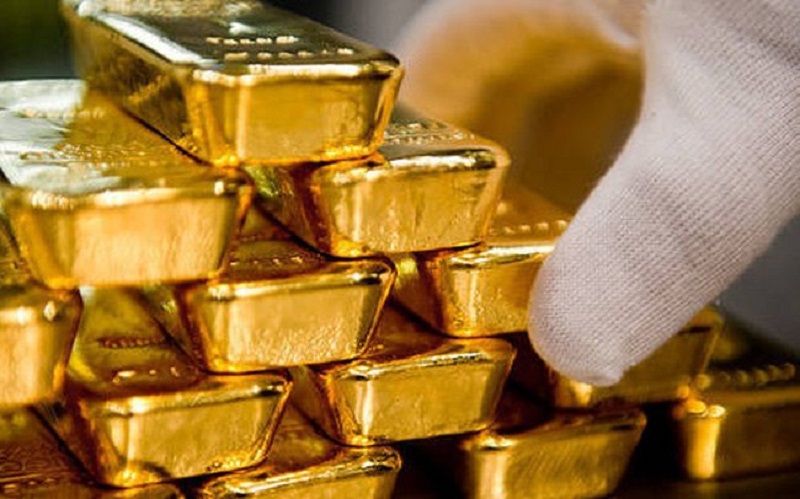What are the prospects for gold prices in 2024?
The fall in worldwide demand for gold, along with the predicted economic slowdown in 2024-2025, would make it difficult for gold prices to climb appreciably.
Decreasing supply and demand
According to analysts, gold prices have recently undergone large changes due to market supply and demand dynamics. The gold market, like other commodity markets, is formed by the interaction of supply and demand activity as well as individual investor behaviors. In terms of supply, several nations throughout the world engage in gold production, extraction, and recycling, with yearly output ranging from 2,500 to 3,000 tons of extraction and around 1,000 tons of recycled gold.

The largest consumption group for gold is for jewelry and artistic purposes (approximately 2,000-2,500 tons per year); the second group is used in the electronics industry as an irreplaceable material in microchip production (800-1,000 tons per year); and the third group is for investment purposes.
According to economist Ho Ba Tinh, while gold for jewelry accounts for a major share of physical gold consumption, global demand for jewelry gold has declined by an average of 6-7% over the last three years as a result of the Covid-19 outbreak and subsequent economic slowdown. The electronics industry has also seen a significant downturn, which has impacted gold demand in this area. Investment demand, on the other hand, is a key and fast-moving element determining gold prices.
Factors influencing investment demand include worldwide gold trade in USD, where the movement of the USD versus other currencies directly influences gold prices. Second, during times of global economic uncertainty, investors, investment funds, and central banks throughout the world often boost gold trade, impacting prices. A recent example is the rise in gold prices in the aftermath of the war between Israel and Palestine. Gold prices soared from $1,820/ounce the night of the Israeli raid to roughly $1,944/ounce the next day. Following that, any risk-related information caused huge changes in gold prices. Gold prices have just topped $2,000 per ounce.
"In terms of investing, I believe there are relatively few individual investors worldwide that directly invest in actual gold. Central banks and ETF funds are the main participants. Individuals seeking to invest in gold on a small scale might do so through these funds. Furthermore, when many factors are taken into account, the average yearly gold price only rises by 3-4% over the long term, and by 7% over the last 20 years," Ho Ba Tinh observes.
Challenges in gold price increase
According to a financial expert in the Vietnamese market, our financial system has expanded over the last 20 years, with the stock market developing relatively recently. Meanwhile, gold has been a popular investment for many years, owing to significant inflation in Vietnam in the past, which resulted in higher gold price volatility compared to the worldwide market.

In 2000, gold prices in Vietnam were about 2 million VND/tael; today, the market price of gold rings is more than 60 million VND/tael, a 30-fold rise in 20 years. This growth is far greater than that of real estate or other assets, generating a psychological propensity among investors to buy gold due to its historically high price and lack of risk from inflation and currency changes. Another aspect is that Vietnamese citizens do not have many investment opportunities, which is a common feature of comparable economies.
Investing in gold, like other investment avenues, has a number of dangers. We must recognize that the Vietnamese economy has changed dramatically, with inflation no longer being high and the currency rate being reasonably steady.
Gold prices hit $1,850/ounce in 2011, but after nearly 12 years, gold prices have only risen to around $2,000/ounce, with periods of decrease ranging from $1,800 to $1,600. As a result, investors who purchased gold from 2011 to the present have only profited by roughly 10%, far less than certain other investment channels.
In Mr.Ho Ba Tinh's opinion, the trend in Vietnam will be similar to other nations across the world in the future, where gold will no longer be a high-profit investment channel since gold is acquired for risk hedging." Recently, some experts predicted that gold prices would rise dramatically in the near future, but we must evaluate the variables influencing gold prices. One aspect is the Federal Reserve's interest rate, which has peaked and may shortly be reduced to assist the economy, affecting gold prices.
"In the past, when the USD interest rate was low, gold prices climbed, indicating a reverse link; however, this is only one element, since there are other variables in the broader economy. According to World Gold Council data, worldwide gold demand is drastically declining, coinciding with the projected economic slowdown in 2024-2025. As a result, real supply and demand for gold are not likely to rise, making it difficult for gold prices to rise much. Gold availability, in particular, has been rapidly falling over the last decade due to increased extraction difficulties. As a result, a significant increase in gold prices, or perhaps reaching $2,500 - $3,000/ounce in the future year, is quite improbable," Mr. Ho Ba Tinh added.








